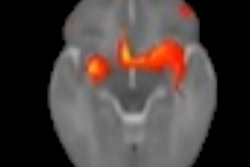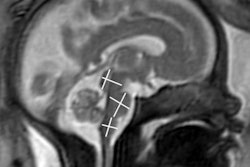
Prenatal detection of congenital heart defects with echocardiography can have a dramatic impact on outcomes. But detection rates are much lower in certain populations, including those with lower socioeconomic position and Hispanic ethnicity, according to a study published on May 17 in Circulation.
Hispanic ethnicity in the U.S. was associated with a 15% lower likelihood compared with non-Hispanic mothers of prenatal detection of one congenital heart condition, transposition of the great arteries (TGA), according to a study led by Dr. Anita Krishnan from Children's National Hospital in Washington, DC. Other factors that contribute to lower detection rates included living in rural areas, which was associated with a 22% lower likelihood of prenatal detection of TGA compared with mothers who lived in more urban areas.
"There is a need for education and advocacy, getting the word out that significant disparities exist and working to develop outreach to the affected populations and regions," Krishnan told AuntMinnie.com.
Prenatal detection, defined by researchers as having a fetal echocardiogram positive for congenital heart disease, has benefits for infants with hypoplastic left heart syndrome (HLHS) and transposition of the great arteries, two of the most common critical newborn congenital heart defects. These include perinatal stabilization, coordination of timely interventions, and selection of a delivery center in proximity to the tertiary care center.
While the benefits of prenatal detection have been recognized for decades, it occurs in less than 60% of congenital heart defect cases in many regions of the U.S. The associations between socioeconomic status, race and ethnicity, and geographic barriers with prenatal detection have not been sufficiently explored.
In this multicenter retrospective study, 1,862 fetuses and infants from 21 centers in the U.S. and Canada were included. Out of these, 1,171 had hypoplastic left heart syndrome, and 691 had transposition of the great arteries.
Among the patients in Canada, only longer distance to a cardiology center was associated with lower prenatal detection rates of HLHS. Those driving 135 miles or more for care were 24% less likely to have TGA detected.
Lower socioeconomic status meanwhile was associated with about a four-week delay in diagnosing prenatal congenital heart disease for pregnant women in both the U.S. and Canada.
Younger maternal age was also associated with lack of prenatal detection, as was single-child pregnancy compared with multiple gestation pregnancy.
Krishnan told AuntMinnie.com that while further work is needed, the differences between the two diseases and finding increased prenatal detection for both diseases in multiple gestation pregnancy suggest some possible reasons.
"There may be differences in the ability to obtain comprehensive evaluation of the outflow tracts in patients who are in lower-resourced or rural neighborhoods or for Hispanic patients. This may be due to decreased access to subspecialists in these areas, or to transportation or other barriers," she said.
The study authors said that future work to increase prenatal detection should be considered in these specific populations.
"Clinicians can use the findings of this study to focus efforts on improving overall prenatal detection rates for congenital heart disease," they wrote. "Clinicians can specifically improve health equity in prenatal detection of congenital heart disease and timing of prenatal detection by improving linkages between the tertiary care center and the populations and regions identified in this study."
Krishnan said several follow-up studies are underway, including one evaluating disparities in short-term outcomes in the population.
"An American Heart Association-funded study is using spatial geo-mapping to better define characteristics of neighborhoods with lower prenatal detection rates," she said. "Finally, we are evaluating telemedicine as a strategy to reach patients living in lower socioeconomic status or rural areas."



















